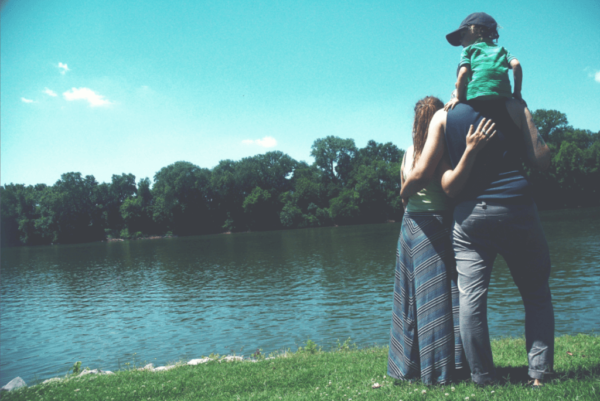The main characteristic of resilient families is they’ve had to confront more than one difficulty. In fact, they’ve strengthened their alliances, learned resources, and accumulated reserves to face life in the process. They aren’t only more resilient but also more loving, humble, and hopeful. It isn’t always easy to remain united in the face of certain challenges of destiny, but some manage to do it with their loved ones effectively.
The term “resilient families” may catch your attention. However, it isn’t a new concept or an innovative approach to resilience. It’s clear that the development of this competency is, in many cases, driven by the family environment. That primary setting in which a person grows up is often key to building the roots of resilience.
In addition, researchers in the field, such as Dr Roland Atkinson. Dr Allan Martin. and Dr CR. Rankin (2009), point out something quite relevant about this. It’d be great to train families in the components that build this dimension. Resilience must be sown on sunny days in order for it to grow enough to help you on stormy days. Therefore, you musn’t wait for adversity to cultivate this tool that’s so necessary for your psychological well-being.
“Resiliency is the ability to spring back from and successfully adapt to adversity.”
-Nan Henderson-
What do resilient families look like?
Salvador Minuchin, a psychiatrist, pediatrician, and recognized authority in family therapy, conceived the family from a systemic perspective. It should be a group in which all members relate to and influence each other in a decisive way. Thus, the ability to face such concrete realities, such as economic or health problems, will depend a lot on personality. Also, on the resources of its members and the way they interact with each other.
For example, some families are incapable of providing effective support to their members. They’re those social microcosms where there’s no synergy or harmony. There’s no family unity, which is why alliances fail when things go wrong. Everyone’s familiar with these types of realities and well-aware of the consequences.
This is why other authorities in the field, such as Dr. Fiona Walsh from Boston University, explains in a study that one of the keys to ensuring the psychological well-being of human beings would undoubtedly lie in being able to teach and facilitate fathers and mothers those pillars that build resilient families.
Attachment and support
Any healthy bond requires feeling the imprint of affection, security, and respectful love (free of harassment), the kind that supports without conditions or blackmail. Thus, the first pillar of resilient families is that of attachment and support. All members of a family should be entrusted with that warm strong bond that won’t allow anyone to fall. That family nucleus will always remain united, supportive, and emotionally nurturing, regardless of what happens.
Family values
“In this family, we believe in love and respect. We don’t tolerate lies, we don’t accept words that hurt and behaviors that belittle. In this home, we stand for hugs and kind words. We respect opinions, even if they don’t agree with ours. We also value spending time together, talking to each other with sincerity, asking for help, and supporting each other always and in any circumstance.” These ideas are simple examples of the values that should be the foundations of any resilient family.

Cohesion and flexibility
An essential premise of resilient families is that the whole is greater than the sum of its parts. What does this mean, though? Well, basically, that the family unit isn’t just about one parent holding all the power and authority. A family is an alliance based on interdependence, respect, and unity, where everyone is equally valuable.
At the same time, and no less important, there’s the principle of flexibility. There are no rigid patterns in happy families and no molds into which everyone must fit in to satisfy one single person’s ideal or desires. Each member has the right to grow, choose, and build themselves. This is because flexibility is synonymous with respect and freedom.
Communication in resilient families
This is an indispensable tool that pumps up every bond and makes possible any alliance in order to overcome any problem. A family that facilitates spaces for communication, empathic listening, assertiveness, and understanding can face almost any circumstance together. Few dimensions are as basic in the social fabric as knowing how to communicate and allowing others to communicate openly and with appreciation.
Shared time and family rituals
Another indispensable nutrient in resilient families is spending time together. It’s true that it isn’t always possible to do so as much as you’d like. However, it’s essential that every shared moment is of quality, hence the importance of rituals. They refer to those moments you repeat every day and with which you nurture your alliances and affections.
Thus, and as an example, sharing moments with children, such as reading them a book before they go to bed or simply talking to them and asking about their day, is a ritual that strengthens the relationship. It improves trust and the emotional bond.

To conclude, resilient families are shaped by those dimensions where love, respect, and commitment promote and ensure the well-being of all of the members. Remember that the whole is always greater than the sum of its parts and should always define the family unit.
Am I Doomed By My Family History?
The post Resilient Families: the Bonds that Allow You to Grow appeared first on Exploring your mind.



















Comments